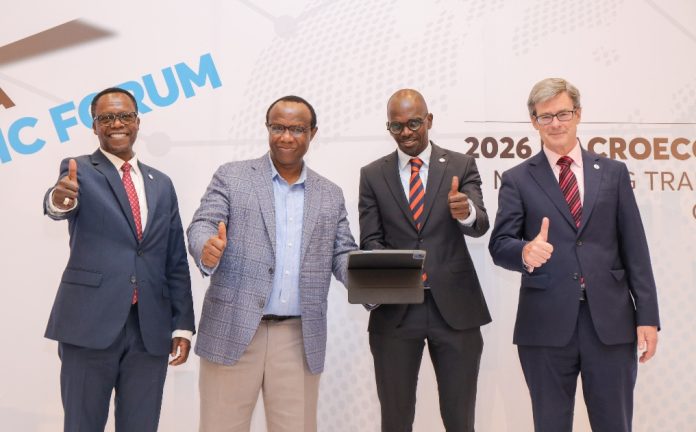NCBA Group has projected that Kenya’s economy will grow by five percent in 2025, supported by improved private sector credit growth, stable inflation and increased fiscal spending. The outlook was shared during the NCBA Economic Forum held at the Nairobi Serena Hotel, which brought together policymakers, economists and industry leaders to discuss how Kenya can strengthen its resilience in a shifting global environment.
Speaking at the forum, NCBA Group Managing Director, John Gachora, said, “The outlook for 2025 remains positive despite global uncertainty. Kenya must continue to pursue pragmatic policy coordination and efficiency in public spending to ensure sustainable growth. Through our various thought leadership platforms, we will continue to bring to you innovative research output as well as the best brains in our country to outline what we need to do to promote economic growth and resilience. This is an investment worth making and one that we at NCBA always stand ready to support.”
Mr Gachora observed that the global economy has remained on a steady growth path in 2025, expanding at about 3.2 percent compared to 3.3 percent in 2024. He said Kenya’s performance reflects resilience amid tightening global financial conditions and trade disruptions. However, he cautioned that slower growth in major economies such as the United States and key Asian markets could affect Kenya’s exports and remittances in 2026.
He noted that Kenya’s near-term growth model, driven by public expenditure, agriculture, and a resilient services sector, faces pressure from high public debt service costs. In the first quarter of the 2025–2026 fiscal year, the government spent KES 509 billion on public debt service out of a total tax collection of KES 554 billion. Mr. Gachora said this limits fiscal space for development and emphasized the importance of efficiency in public spending to ensure better value for money.
NCBA Group half-year profits rise 12.6 per cent to Sh11.1 billion
The forum highlighted that inflation has been on a downward trend throughout 2025 but remains vulnerable to fluctuations in food prices. Participants also discussed the importance of maintaining liquidity in the foreign exchange market, deepening regional trade and strengthening the country’s public debt framework to support inclusive growth under the Bottom-Up Economic Transformation Agenda.
Mr Gachora said Kenya’s economy remains supported by strong service sectors such as telecommunications, transport and domestic trade. He projected that the manufacturing sector will experience mixed performance, with the food sub-sector expected to show greater resilience. He also highlighted positive prospects in exports, noting that global coffee prices are expected to trade at multi-year highs of about USD 7.00 per kilo, while horticultural exports will remain stable following the extension of the European Union’s deforestation regulations for small and medium enterprises.
Looking ahead, NCBA forecasts that Kenya’s economy will grow by 5.1 per cent in 2026, supported by renewed fiscal momentum, export diversification and improved investor confidence. Mr Gachora also called for the development of a high-frequency consumer activity indicator to better understand household consumption trends, which account for over 70 percent of GDP.
He reaffirmed NCBA’s commitment to supporting research, dialogue and innovation that contribute to informed policy and sustainable growth, adding that platforms like the NCBA Economic Forum remain key in shaping Kenya’s economic future.








